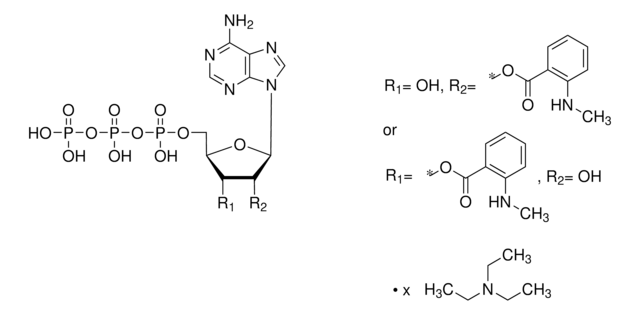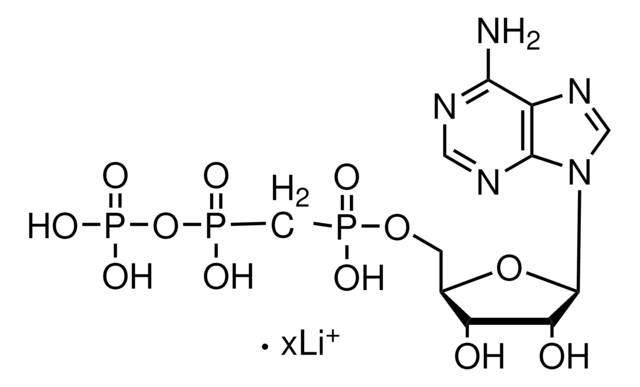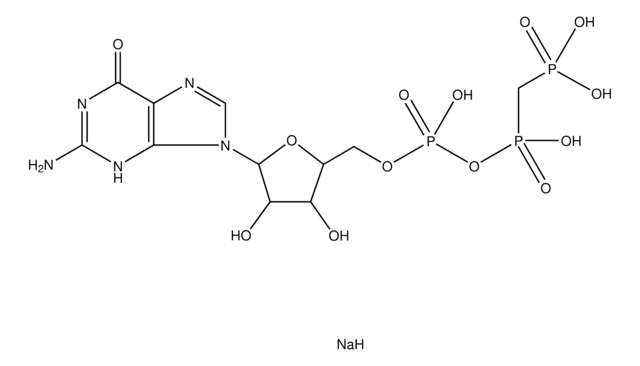10102547001
Roche
AMP-PNP
Adenylyl-imidodiphosphate
Synonym(s):
Adenosine 5′-(β,γ-imido)triphosphate lithium salt hydrate, β,γ-Imidoadenosine 5′-triphosphate lithium salt hydrate, AMP-PNP, ATP[β,γ-NH], Adenylyl imidodiphosphate lithium salt hydrate, App(NH)p
About This Item
Recommended Products
form
powder
mol wt
Mr 506.2 (ANP-PNP)
Mr 529.9 (AMP-PNP-Li4)
packaging
pkg of 25 mg
manufacturer/tradename
Roche
SMILES string
[Li+].[Li+].[Li+].[Li+].[H]O[H].Nc1ncnc2n(cnc12)[C@@H]3O[C@H](COP([O-])(=O)OP([O-])(=O)NP([O-])([O-])=O)[C@@H](O)[C@H]3O
InChI
1S/C10H17N6O12P3/c11-8-5-9(13-2-12-8)16(3-14-5)10-7(18)6(17)4(27-10)1-26-31(24,25)28-30(22,23)15-29(19,20)21/h2-4,6-7,10,17-18H,1H2,(H,24,25)(H2,11,12,13)(H4,15,19,20,21,22,23)/t4-,6-,7-,10-/m1/s1
InChI key
PVKSNHVPLWYQGJ-KQYNXXCUSA-N
Looking for similar products? Visit Product Comparison Guide
General description
Application
AMP-PNP has been used for two-motor fluorescence assay.
Features and Benefits
88% AMP-PNP (from N), 4.5% lithium, 6% water
Quality
Storage and Stability
Other Notes
Storage Class Code
11 - Combustible Solids
WGK
WGK 1
Flash Point(F)
Not applicable
Flash Point(C)
Not applicable
Choose from one of the most recent versions:
Already Own This Product?
Find documentation for the products that you have recently purchased in the Document Library.
Customers Also Viewed
Our team of scientists has experience in all areas of research including Life Science, Material Science, Chemical Synthesis, Chromatography, Analytical and many others.
Contact Technical Service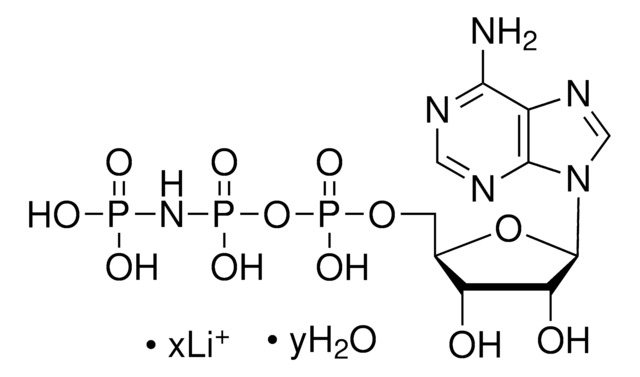

![Adenosine 5′-[γ-thio]triphosphate tetralithium salt ≥75% (HPLC), powder](/deepweb/assets/sigmaaldrich/product/structures/319/398/e29221c2-3649-455b-bd33-583bb017ec7d/640/e29221c2-3649-455b-bd33-583bb017ec7d.png)

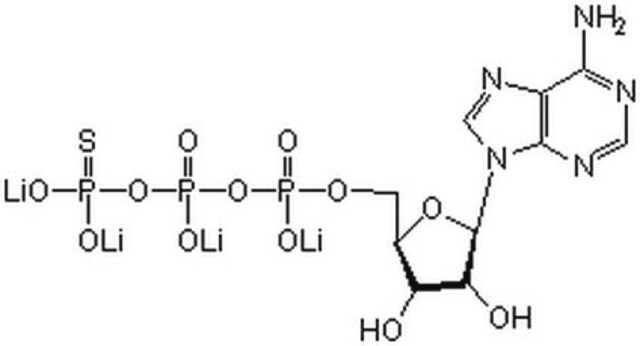
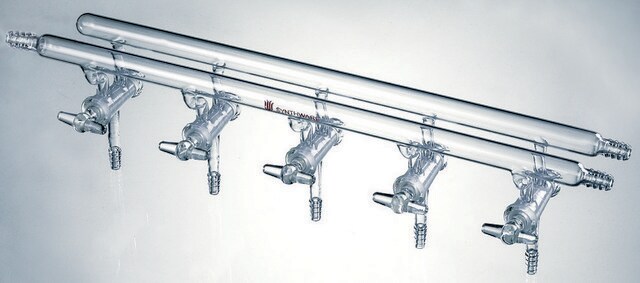

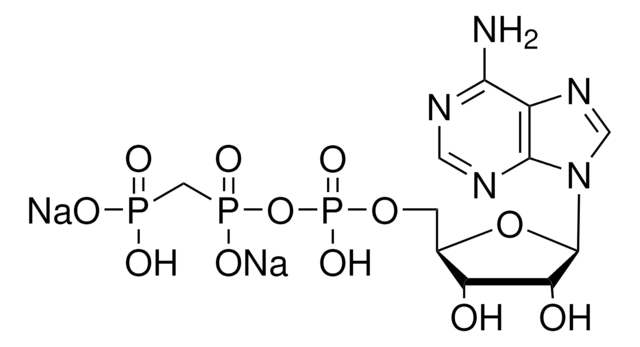

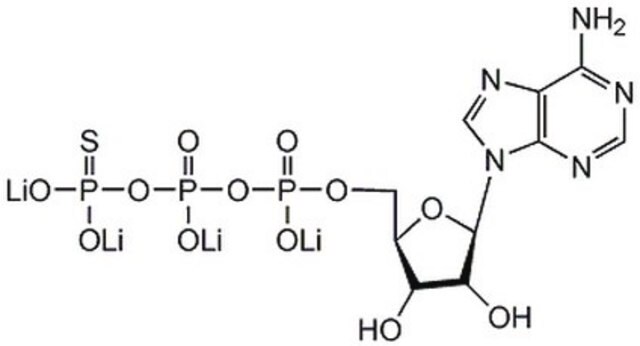
![Guanosine 5′-[β,γ-imido]triphosphate trisodium salt hydrate ≥85% (HPLC), powder](/deepweb/assets/sigmaaldrich/product/structures/204/494/05808804-1ca7-44bf-b6c5-d4934dc7cb85/640/05808804-1ca7-44bf-b6c5-d4934dc7cb85.png)
![γ-[(6-Azidohexyl)-imido]-ATP sodium salt](/deepweb/assets/sigmaaldrich/product/structures/219/775/fab7c78e-9638-4061-9426-e4c60dc1fb76/640/fab7c78e-9638-4061-9426-e4c60dc1fb76.png)
